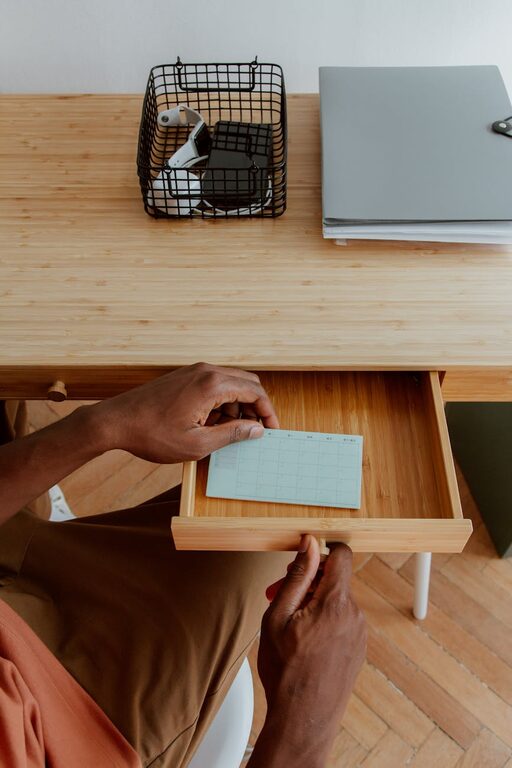
Simple Ways to Reduce Household Paper Clutter
Reducing paper clutter in your home can make a big difference in creating a calm, organized environment. Piles of bills, receipts, mail, and random notes often take up valuable space and cause unnecessary stress. Fortunately, managing paper clutter doesn’t require complicated systems or expensive tools. In this post, we’ll explore simple, practical steps you can take to keep your household papers under control.
Why Paper Clutter Can Be Overwhelming
Before diving into solutions, it helps to understand why paper clutter accumulates and why it can be stressful. Paper items tend to pile up because they often arrive daily or weekly — mail, school notices, bills, coupons, and more. Without a system to process them, they quickly become an unruly mess. Visual clutter can reduce your ability to focus and increase anxiety, even if it seems minor.
By adopting some simple habits and organizational tools, you can keep paper clutter in check and enjoy a tidier home.
Step 1: Create a Central Paper Zone
Designate one specific area in your home for all incoming and outgoing paper. This might be a tray, basket, or folder near your main entryway or a home office desk. Keeping papers in one accessible spot helps prevent them from scattering around the house.
Tips for your Paper Zone:
– Use a flat tray or shallow basket so papers don’t get hidden or lost.
– Label each section if you use multiple containers (e.g., mail to file, bills to pay, coupons).
– Choose a spot that you pass by regularly to make reviewing papers easier.
Step 2: Sort and Purge Regularly
The key to reducing paper clutter is frequent sorting. Make it a habit to go through your paper zone at least once or twice a week. During this session:
– Sort into categories: Keep, File, Trash/Shred, Act on (things that require immediate attention).
– Purge unnecessary papers: Recycle junk mail, expired coupons, and outdated documents.
– Shred sensitive information: Protect your privacy by shredding papers containing personal data.
Regular purging prevents the pile from growing out of control.
Step 3: Digitize Important Documents
One of the best ways to reduce physical paper is to create digital copies of important documents. With smartphones and scanners, it’s easy to save digital versions of bills, receipts, warranties, and tax documents.
How to digitize effectively:
– Use scanning apps like Adobe Scan, CamScanner, or your phone’s built-in camera.
– Name files clearly and organize them in folders (e.g., Bills > Electricity).
– Back up your files in cloud storage or an external hard drive for safety.
Keeping digital copies reduces the need to hold on to multiple paper versions.
Step 4: Switch to Paperless Billing and Statements
Many companies now offer paperless billing options which send your statements through email or online accounts instead of mail. Signing up for these can significantly cut down the volume of incoming paper.
Steps to go paperless:
– Visit your service providers’ websites (utilities, banks, credit cards).
– Enroll in paperless billing or e-statements.
– Set reminders to check your online accounts regularly.
This simple change cuts clutter and is often more environmentally friendly.
Step 5: Create a Filing System for Essential Papers
For papers you need to keep, establish a clear filing system. Keep it simple to avoid getting overwhelmed.
Filing system ideas:
– Use color-coded folders or binders for different categories (Bills, Medical, Insurance).
– Label folders clearly and keep them in an easy-to-access location.
– Limit the amount of paper you keep by reviewing your files at least twice a year.
Keeping only what’s necessary and organized saves space and time.
Step 6: Use Sticky Notes and Digital Reminders Instead of Paper
Sometimes paper clutter starts with sticky notes and reminder lists. Instead, use digital tools to track tasks and reminders.
Options to try:
– Smartphone reminder apps or calendars.
– Digital note apps like Evernote or OneNote.
– Voice assistants like Siri or Google Assistant.
Using digital reminders cuts down on scrap paper and lost to-do lists.
Step 7: Avoid Bringing in Unnecessary Paper
Reduce the amount of paper you bring into your home in the first place.
Some strategies:
– Avoid picking up flyers, brochures, or newspaper subscriptions you don’t need.
– Opt for digital tickets, coupons, and invitations when possible.
– Politely ask to remove your address from mailing lists for junk mail.
Fewer new papers mean less clutter to manage.
Final Thoughts
Reducing household paper clutter is a manageable and rewarding process. By setting up a dedicated paper zone, sorting regularly, digitizing documents, and switching to paperless options, you’ll gain more space and a calmer home atmosphere. Start with one or two of these ideas today and build habits that keep your home organized over the long term.
Remember: The goal isn’t perfection but progress. A little effort consistently goes a long way in keeping paper clutter under control. Happy organizing!
